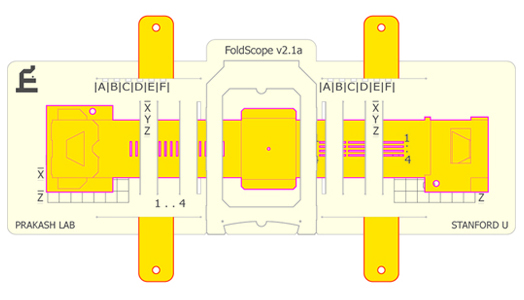IAnD Exclusive
Design Impact Special
By Team IAnD
Photography: Courtesy Foldscope
Design Impact Special
By Team IAnD
Photography: Courtesy Foldscope
Stanford Professor, Manu
Prakash designs an ultra-low-cost paper microscope to aid disease diagnosis in
developing regions…
Design and technology play
a wide field in the development of medical equipment – a basic factor that has
spearheaded the medical field to where it stands today; and working towards
solutions for the developing nations has always been an integral part.
Assistant Professor
Bioengineering, Affiliate, Stanford Woods Institute for the Environment, Manu Prakash and his team
have used the simple origami-toys principle to design a full-fledged
scientifically working model of the laboratory microscope. Dubbed as the ‘Foldscope’,
the paper model that can be assembled in minutes is a compact design and uses inexpensive
poppy-seed-sized spherical lenses rather than the precision-ground curved glass
lenses used in traditional microscopes. In
its simplest configuration, one 17-cent lens is press-fit into a small hole in
the center of the slide-mounting platform, whereas some of his more
sophisticated versions use multiple lenses and filters.
What Manu terms as ‘use-and-throw
microscopy’ comes in three parts: a slip of paper, which acts as the slide on
which the specimen is kept, a slide for the ball-shaped lens, and a piece that
contains an LED light, to help illuminate the subject being examined. Once all
the different components are assembled as per instructions, the paper
microscope is readied as a fully working model. Using one’s thumb and
forefinger, one can shift the slide to examine the specimen from various angles
or to control light. By holding the micro-lens close enough to one’s eye that
eyebrows touch the paper, samples can be magnified up to 2,000 times
(principles of optical physics). With minor design modifications, Foldscope
can be used for bright-field, multi-fluorescence or projection microscopy.
.jpg) |
| . |
.jpg) |
| . |
The nature and cost
effectiveness of producing the Foldscope makes it a very viable option,
especially in areas, where technology is not readily available. Poorer regions
of the world not only have a hard time gaining access to microscope technology,
but also have the highest prevalence of viral and bacterial diseases, which
microscopes can help fight against; say, dangerous blood-borne diseases like
malaria, African sleeping sickness, schistosomiasis and Chagas; moreover, the
Foldscope can be incinerated after use to safely dispose off infectious biological samples.


.jpg)
.jpg)
.jpg)
.jpg)
In CAD, you can choose from a variety of drawing tools that create lines, circles, spline curves, and more. You can easily move, copy, offset, rotate, and mirror objects.
ReplyDelete